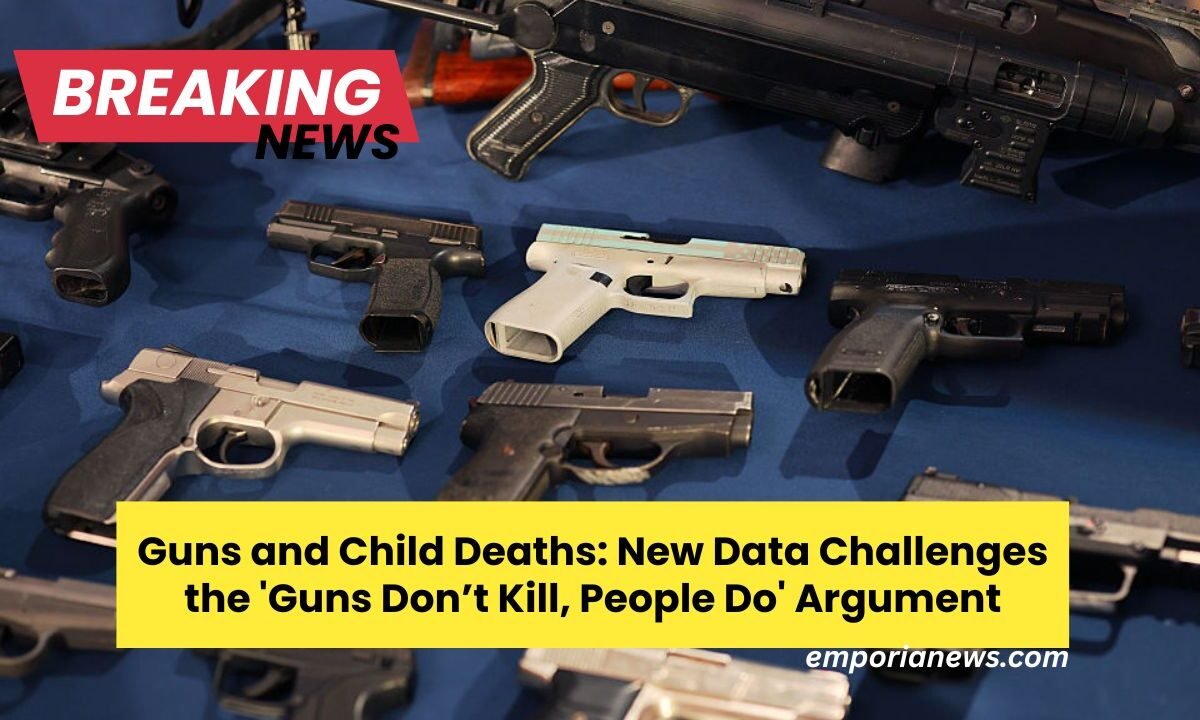The familiar saying “guns don’t kill people, people kill people” has long been used to oppose common-sense gun safety laws.
But real-world data increasingly reveals the limitations—and dangers—of that claim.
Accidental shootings, for instance, claim the lives of hundreds of children each year, a sobering reminder that firearms often do kill without malicious intent.
Gun Violence and State Policy: A Stark Contrast
If the issue were simply about bad people rather than guns, then why do states like Missouri, where gun ownership is barely regulated, experience significantly higher gun death rates, especially among children, than states like New York or California, which enforce strict gun control laws?
Are Missourians inherently more violent? That’s unlikely. But the gun lobby’s narrative would seem to imply otherwise.
AMA Study Links Lax Gun Laws to Pediatric Deaths
A recent report from the American Medical Association (AMA) presents compelling evidence linking state gun laws to the rates at which children die from firearms.
The study underscores a grim and uniquely American reality: guns are now the leading cause of death for children in the United States—a tragic distinction not shared by any other developed nation.
On average, firearms claim the lives of approximately seven American children every day.
This staggering statistic becomes even more troubling when considering that the U.S. has both the highest gun ownership per capita and some of the loosest gun regulations in the world.
Categorizing States: Strict vs. Permissive Gun Laws
To better understand the relationship between legislation and firearm deaths, the AMA categorized states into three groups:
- Strict gun laws: States like California, New York, New Jersey, and Illinois
- Moderately permissive laws: States including Michigan, Pennsylvania, and Virginia
- Most permissive laws: States such as Alabama, Mississippi, Louisiana, and Missouri
Among these, Missouri stands out for its particularly relaxed gun laws:
- No background checks required for gun purchases
- No permit necessary to carry firearms
- No red flag laws to prevent individuals with mental health issues from owning weapons
Missouri’s Troubling Legislation and Its Consequences
Missouri’s controversial Second Amendment Preservation Act, which directed local law enforcement to disregard federal gun laws, was eventually ruled unconstitutional by a federal court.
Still, the law reflected an extreme approach to gun rights that has had real-world consequences for Missouri’s children.
According to the AMA study, Missouri ranks among the worst states for pediatric firearm deaths, with an average of 4.2 deaths per 100,000 children annually since the state began loosening its gun laws in 2010. Prior to that, the rate was below 3 per 100,000.
America’s Most Dangerous States for Children and Firearms
Missouri is not alone. Other states with similarly permissive laws also have the highest child gun death rates:
| State | Child Firearm Deaths (per 100,000) |
|---|---|
| Louisiana | 5.7 |
| Alaska | 5.4 |
| Mississippi | 5.1 |
| Missouri | 4.2 |
| Montana | 4.2 |
| Wyoming | 4.2 |
In stark contrast, states with tighter gun regulations report much lower pediatric firearm fatality rates:
| State | Child Firearm Deaths (per 100,000) |
|---|---|
| California | 1.4 |
| New York | 0.9 |
| New Jersey | 0.9 |
| Massachusetts | 0.6 |
The Urban Myth: Blaming Cities Like St. Louis and Kansas City
Gun-rights advocates often claim that Missouri’s high gun death rates are skewed by violence in St. Louis and Kansas City. However, this argument ignores two key facts:
- Local governments in these cities are restricted from implementing stricter gun laws due to state-level preemption laws.
- Large cities in states like New York and California—which also deal with urban challenges—still manage to maintain significantly lower rates of child gun deaths, thanks in part to state-level legislation that supports local action.
The evidence is undeniable: states with stronger gun safety laws have fewer child gun deaths.
The data from the AMA and other sources show that the looseness of gun legislation directly correlates with higher mortality rates among children.
Missouri’s experience serves as a cautionary tale of what happens when political ideology overrides public health.
It’s time to reframe the debate. Instead of clinging to outdated slogans, voters should demand accountability.
Because in truth, guns may not kill children—but gun-friendly policies and the politicians who support them certainly do.




